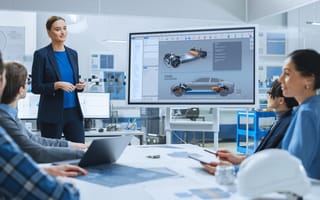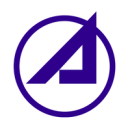In the kinetic world of technology, engineering teams are the beating heart that transforms ideas and concepts into cutting-edge technology and products.
They are far more than just the individuals tirelessly working behind screens to troubleshoot code; they are the key collaborators, experimenters and curious minds that create tangible solutions to complex problems.
At four Los Angeles companies, engineers are eagerly taking on exciting projects. These projects target a diverse range of problems, illustrating the wide breadth of ways tech professionals can employ their skills and knowledge to reshape the modern world.
At DRINKS, the team created a hyper-localized shopping experience that manages tax regulations down to the zip code — something few companies can do. Elsewhere, at BlackLine, software engineers are building a platform that automates end-to-end accounting processes.
Meanwhile, in an entirely different realm of outer space, engineers at The Aerospace Corporation are creating a spacecraft that is designed to fail and then recover. Finally, team members at Edmunds have created a system that shortens data updating time from months to days.
Supported by enthusiastic team cultures and motivated by a desire to fulfill lofty ambitions, these professionals revealed their most exciting projects and the things that enable success.

The Aerospace Corporation is on the forefront of efforts to deepen national security against space-based threats and create technologies to further exploration.
Describe the product or feature you worked on. What does it do, and what was your role in creating it?
I had the privilege of working on a project that we call Moonlighter. Moonlighter is a 3U CubeSat that we will be using to test and experiment with cybersecurity technologies in space. Before Moonlighter, we could only do ground-based experiments or extremely limited experiments that involved a vehicle.
Moonlighter was developed so that we can have holistic cyber experiments involving the entire space system to understand how to implement defensive cybersecurity operations at the system level. It will be used in cyber exercises and experiments including the Hack-a-Sat competition this August sponsored by the Air Force Research Lab and Space Systems Command.
My role in Moonlighter is as the principal investigator. In this capacity, I was part of the project leadership team. I outlined the project concept and mission objectives in the early phases, oversaw the development of the vehicle and ground system and am engaged with the operations, including analyzing results.
What was the most exciting or interesting aspect of working on this product or feature?
The most exciting thing for me about this project is being a part of a team that is building something new and unique and getting to be with the project from the start. This vehicle’s design was interesting because it’s a spacecraft that will be the centerpiece of hacking exercises. Normally, we design a system, analyze how it could fail, then mitigate those things. Here we were developing a system that is designed to fail to a certain extent and then recover.
Normally, we design a system, analyze how it could fail, then mitigate those things. Here we were developing a system that is designed to fail to a certain extent and then recover.”
How did your engineering team culture support the successful creation of this new product or feature?
Aerospace is unique in that everywhere you turn, there’s a well-recognized expert in some specialty. It’s very nice to have when you’re trying to come up with a solution to a hard problem. We can rapidly pull together a team to solve a complex issue and have confidence in the outcome.
BlackLine helps midsize and large companies modernize accounting processes by unifying data, automating repetitive work and gaining visibility.
Describe the product or feature you worked on. What does it do, and what was your role in creating it?
Currently, I am the lead engineer on a product that we are designing to revolutionize the accounting process transformation while vastly improving the visibility into the inner workings of the financial close process. The vision of this product is to create a critical accounting hub and unified space for any company’s finance team to orchestrate and automate their end-to-end accounting processes.
This new product has a very powerful UI to enable any company to visually build an automated workflow catered to their individual needs and processes and to monitor the runtime progress of their financial processes. The workflow will support various task types to allow seamless integrations between both external enterprise resource planning systems as well as internal BlackLine products.
What was the most exciting or interesting aspect of working on this product or feature?
Honestly, the most exciting aspect for me is to be able to bring to fruition the innovative thinking that went into this new product. There were innumerable challenges that a software engineer craves in their career. We built Open API compliant interfaces that can be used by any client, whether the client is a React-based UI or another system or end user. We provide multiple input modes which allow users to import their process templates either as CSV or spreadsheets or be able to add and edit the tasks using our powerful UI.
The most exciting aspect for me is to be able to bring to fruition the innovative thinking that went into this new product.”
Once the customer input is received and validated, the workflow steps are modeled into fine-grained business process modeling notation 2.0 and deployed to the Camunda Process Engine for execution. As the workflow progresses, the execution information is collected at each step level, retried for recoverable errors, schedule adjustments are made on the fly, and admins are notified for non-recoverable situations.
How did your engineering team culture support the successful creation of this new product or feature?
It is no easy feat in my honest opinion to take on the implementation of a green field product from the ground up that has the potential to disrupt the market, without the engineering team culture that we have at BlackLine. As soon as this product was prioritized as being one of the topmost for the company’s growth and capturing market share, the various product and cloud infrastructure teams on which the studio team had dependencies were aligned in their respective goals. If there were conflicts, they were addressed and resolved quickly by the management. The implementing teams pushed through to meet the integration milestones.
The release cycle for the project was adjusted to be off-cycle so that integrations neatly fell into place. Product and engineering worked hands-in-glove to debate and concur on the best path forward to 'wow' customers and deliver value. The engineers’ agility and hard work shined throughout the entire development lifecycle for this project.
Edmunds has been empowering car shoppers since the 1960s, first with its printed car guides and then with the automotive industry’s first website in 1995.
Describe the product or feature you worked on. What does it do, and what was your role in creating it?
Given the sheer volume of data and the essential need for a seamless customer experience, we’ve initiated a project aimed at achieving a tenfold improvement in our operational performance. The core objective is to reduce the data updating time frame from months to days.
This project will ensure the timely availability of up-to-date and standardized vehicle information, despite the varied nomenclature used by different manufacturers.
In this project, my role is primarily that of a strategic leader, or what we call a technology and product sponsor. I am responsible for defining the project vision. This involves setting a clear direction for the project, outlining what we hope to achieve in the form of measurable success metrics, articulating how our efforts will contribute to Edmunds’ broader objectives and laying down software architecture and guidelines for the project. These guidelines help maintain consistency in our technological and operational approaches, ensure that we adhere to best practices and guide our team in making decisions that align with our project vision and objectives.
What was the most exciting or interesting aspect of working on this product or feature?
One of the most exhilarating aspects of working on this project was undoubtedly tackling the sheer magnitude of the desired improvement. The team experimented with open-source solutions, vendor integrations and innovative cloud-native machine-learning solutions. We were attempting to streamline the process of standardizing diverse data formats and terminologies across various vehicle features. As you can imagine, the myriad of terms used by different manufacturers could easily confuse any customer.
The team’s adoption of new technologies and willingness to embrace change and learn continuously was truly inspiring. This project was not just about achieving business impact or improving operational performance; it was also about growth, learning and pushing our boundaries, which made the experience truly enriching and exciting.
This project was not just about achieving business impact or improving operational performance; it was also about growth, learning and pushing our boundaries.”
The incremental value added with technology experimentation has reduced the effort for some of the team’s most complex tasks from 220 hours to under 30 hours. We are entering the next exciting phase, and with the recent advancements in large language models, we can accurately categorize and standardize the terminology for several features.
How did your engineering team culture support the successful creation of this new product or feature?
Our engineering team’s culture has been instrumental in the successful creation of this new product feature. Rooted in autonomy, learning from failures, rapid iteration, collaboration, ownership and continuous learning, our culture has shaped our approach to problem-solving and innovation.
The response to a challenge we faced during the first implementation phase highlighted our culture in action. We incorporated a vendor solution into our architecture but soon identified that it created a maintenance overhead that wouldn’t scale as needed for our project. The autonomy our team enjoys led to a proactive search for alternatives. The decoupled architecture of our system supported this exploration. A “battle-hardened” framework used by another department was identified as a promising replacement for the vendor solution.
This example highlights the culture of reuse and cross-departmental collaboration that we nurture and emphasizes the power of a supportive and dynamic team culture. It’s not just about our technology or tools but about how we work together, take ownership, learn from failures and help each other grow. That’s the real driving force behind our success.

DRINKS is an e-commerce company that makes it simple for retailers, online marketplaces and wineries to offer wine for home delivery.
Describe the product or feature you worked on. What does it do, and what was your role in creating it?
I played a crucial role in developing DRINKS’ Shopify app that allows businesses to effortlessly offer home wine delivery to their customers. The technology ensures that a customer cannot purchase a certain product — say, a sparkling wine — if they’re not of legal age or in a region that does not permit it.
My focus is on determining the most sustainable, cost-effective packaging to ship orders in. DRINKS is a perfect example of what we in tech call “eating your own dog food” — we built it for ourselves and use it 24 hours a day.
There are two primary innovations here. The first is real-time compliance and regulatory tech. The second is integrating this technology into Shopify, the world’s largest e-commerce ecosystem. We had to address tax-related issues at state, city and zip levels, which only a handful of companies have the capacity to do accurately and in real-time, at scale.
What was the most exciting or interesting aspect of working on this product or feature?
The most exhilarating aspect for me was undoubtedly working on order fulfillment. This is our bread and butter, the core around which our offerings of compliance and reporting revolve. Processing orders and their components at such a massive scale is fascinating. Imagine a firehose of information streaming towards you with thousands of orders that must be processed in an hour. The scale of this operation is vast, and the fact that we are successfully managing it is extremely rewarding.
The scale of this operation is vast, and the fact that we are successfully managing it is extremely rewarding.”
One intriguing anecdote involves a teammate who specializes in the reporting aspect. His genius is in tabulating everything down to the last penny and flagging any discrepancy, regardless of how minuscule. It’s incredibly satisfying to know that not only are we handling this massive data but also meticulously accounting for it.
The team’s uncommon precision inspires confidence to innovate and create new, significant features and sets the stage for us to dream big and work towards our “pie in the sky” ideas.
How did your engineering team culture support the successful creation of this new product or feature?
We are a proactive, organized group that thrives on planning and structured sprint schedules rather than last-minute crunches. We operate in small, focused teams and ensure everyone is looped into each project’s progress.
During our first private beta launch with partners, there was a last-minute push to complete the final piece of the puzzle by a certain deadline. Instead of pressuring the team to work overtime, I ordered food and spent a few hours in a relaxed yet productive session with a colleague. This “crunch moment” felt more like a late working dinner with a friend than an exhausting effort, owing to our team’s supportive, ego-free culture.
Even in our intense moments, we are driven by a desire for accomplishment, not by pressure from management. Our mission-driven approach is a testament to the strength of our remote-first team culture. We collaborate effectively, keep each other informed, and maintain a sense of camaraderie and unity across state lines and time zones. We’ve recreated the dynamism of a startup environment within our virtual living rooms, which I find truly remarkable.













